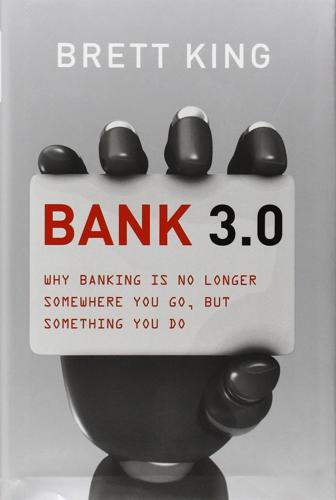debanked
description: individuals or businesses that are excluded from traditional banking services
2 results

Bank 3.0: Why Banking Is No Longer Somewhere You Go but Something You Do
by
Brett King
Published 26 Dec 2012
In 2011 almost $40 billion in deposits was freed from traditional banks to credit unions and the like, along with an additional $200 billion in prepaid cards, resulting in the loss of approximately $12 billion in revenue (including overdraft fees, monthly fees, lending fees, and interchange) for the incumbents. Again, look to de-banked consumers as an emerging group effecting this change. The problem for banks is that increasingly this group of de-banked customers who use non-bank value stores for power purchasing are not the poor underprivileged struggling with unemployment and with dismal credit ratings (as banks imagine they might be). Increasingly these are technology-enabled professionals, university graduates with prime credit ratings.
…
Contents Acknowledgements Introduction Part 01: Changes in Customer Behaviour Chapter 1: The Demands of the Hyperconnected Consumer Psychological impact Process of diffusion The four phases of behavioural disruption Retail banking disruption and the de-banked Utility and service are the new differentiators Chapter 2: The ROI of Great Customer Experience Channel silos Organisation structure The Branch versus Online versus Mobile debate Breaking bad inertia Part 02: Rebuilding the Bank Chapter 3: Can the Branch Be Saved? Always banking, never at a bank™ The core function of the branch in the 21st century Branch innovations built to engage What happens when they don’t visit anymore?
…
In fact, millions of them abandoned their traditional bank relationships in favour of prepaid debit cards, PayPal accounts, mobile payments, and other such workarounds to a system that was coming apart at the seams. With $200 billion in prepaid debit cards in the US alone in 2011, this was not a minor blip, this signalled a fundamental change—the rise of the “de-banked”.1 It has become clear that Bill Gates’ quote of old about us needing banking, but not banks, has never been more likely an outcome of the technology and behavioural-led disruption we find ourselves in today. In this revised edition, Bank 3.0, the message I want you to take away is this: Banking is no longer somewhere you go, it’s something you do.

The Authoritarian Moment: How the Left Weaponized America's Institutions Against Dissent
by
Ben Shapiro
Published 26 Jul 2021
Leftist interest groups immediately began pressuring other major banks to do the same: American Federation of Teachers president Randi Weingarten said the union would not recommend Wells Fargo’s mortgage lending program to its members because of ties to the gun industry.40 In May 2019, Chase Bank began closing bank accounts for customers deemed radical, including Enrique Tarrio of the Proud Boys and radical activist Laura Loomer. Jamie Dimon, CEO of Chase Bank, said, “Very directly, we have not and do not debank people because of their political views.”41 For now, presumably. This threat extends beyond the financial services industry. When Amazon Web Services, whose sole job is to provide cloud services, decides to deplatform Parler, that’s polarizing. When Mailchimp, an email delivery service, refuses to do business with the Northern Virginia Tea Party, that’s polarizing.42 When PayPal announces that it uses slurs from the Southern Poverty Law Center to determine which groups to ban, that’s polarizing.43 When Stripe announces it will not process funds for the Trump campaign website after January 6, that’s polarizing.44 The question here isn’t whether you like any of these groups.